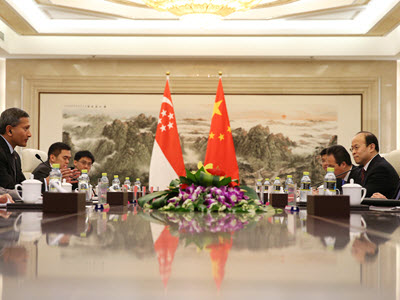Diverging Paths? Singapore-China Relations and the East Asian Maritime Domain
Ja Ian Chong (National University of Singapore) argues that seeking simultaneous accommodation of both the United States and China may therefore produce diminishing returns and growing risks for Singapore as conditions increasingly constrain the island’s ability to tack between the two major actors.
Singapore and China are experiencing an unprecedented period of friction in their usually calm bilateral relations. Much of the divergence is over issues relating to the South China Sea, despite the fact that Singapore is not party to the sovereignty disputes. In particular, the two sides differ in their interpretations of the United Nations Convention on the Law of the Sea (UNCLOS) and over regarding China’s reclamation of features in the South China Sea. Behind these differences lie divergent perspectives on the existing international order, international law, the management of maritime issues, and Singapore’s strategic partnership with the United States. Although Singapore’s perspective reflects its long-standing policy of not choosing sides between Washington and Beijing, issues relating to maritime access nonetheless threaten to embroil the island state in U.S.-China tensions.
CHINA’S DISSATISFACTION
Indicative of the cooling of Singapore-China relations over the past few years has been the rising criticism of Singapore in China’s state-controlled press. An increasingly common refrain in Chinese media outlets is the critique that Singapore has been siding with the United States against the People’s Republic of China (PRC) over the South China Sea disputes. Topping this wave was a debate between Singapore’s ambassador to China, Stanley Loh, and the editor-in-chief of China’s Global Times, Hu Xijin, which played out over several issues of that newspaper. The exchange saw China’s Ministry of Foreign Affairs weigh in on the side of Hu. In contention was the assertion by the Global Times that Singapore’s mention of the rule of law in the South China Sea during the 2016 Non-Aligned Movement summit in Venezuela was intended to signal a siding with Washington against Beijing. Singapore disputes this claim.

General view of the summit of the Non-Aligned Movement in Porlamar, Venezuela, on September 17, 2016.(Ronaldo Schemidt/AFP/Getty Images)
Online chatter and, occasionally, personal interactions in China have also been taking on a more overtly critical tone toward Singapore. Chinese commentary on Internet forums and in op-eds periodically accuses Singapore of “forgetting its origins” (wangben) or of being “a country of Han traitors” (hanjianguo), presumably because Singapore’s ethnic majority is Han Chinese. The term hanjian is especially emotionally charged for the PRC, having originated as an epithet for Chinese collaborators with Japan during the “war of resistance” (1937–45). Commentary too depicts Prime Minister Lee Hsien Loong as useless and ineffective—a view that Singaporean business people also report hearing from Chinese associates. So pervasive is online vitriol toward Singapore that several Chinese Internet memes list “hating Singapore” as a daily task for a patriotic PRC citizen.
The current round of Singapore-China disagreements began in 2010, when Singapore’s then foreign minister George Yeo was characterized by Beijing as leading criticism in ASEAN of China’s increasing willingness to assert its claims over disputed South China Sea waters. This earned Singapore the reminder from then foreign minister Yang Jiechi that it is a “small country” that should remember its place. Yang directed his remarks toward all ASEAN members present, but was reportedly staring at Yeo while delivering those statements. Periodic Chinese criticism of Singapore’s close relationship with the United States followed, with warnings that small and medium-sized countries should not play major powers against each other or allow U.S. manipulation. Singapore’s insistence on the rule of law in the South China Sea over PRC objections likewise upset Beijing. Its military training in Taiwan also drew China’s ire, culminating in the seizure in Hong Kong of Singaporean armored vehicles returning from exercises.
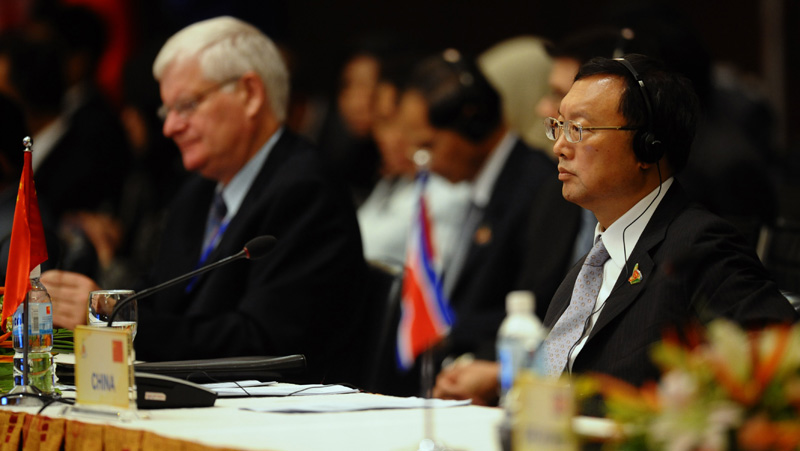
Chinese Foreign Minister Yang Jiechi attends the plenary session of the ASEAN Regional Forum security dialogue in Hanoi on July 23, 2010. (Hoang Dinh Nam/AFP/Getty Images)
SINGAPORE’S VEXATIONS
Singapore too has its frustrations with China. Chinese actions in the South China Sea—ranging from the reclamation and arming of maritime features to energy exploration, incursions by fishing vessels into disputed waters, and the detention of non-PRC fishing vessels—have unsettled Singapore. The scale of Chinese actions far outstrips those of other South China Sea claimants and threatens to destabilize sea lines of communication critical for trade-reliant Singapore. That the PRC’s behavior seems to be in tension with both current mainstream interpretations of UNCLOS and ASEAN understandings of good neighborliness also perturbs Singapore, which depends on such rules and norms to curb major-power excesses. China’s use of ships and aircraft to challenge Japan, South Korea, and the United States in the region adds to Singapore’s worries, as such actions portend similar moves toward other regional actors.
Singapore has made its difference in positions known to Beijing both privately and publicly. Its insistence on the rule of law at the 2010 ASEAN Regional Forum as well as at subsequent ASEAN and bilateral meetings indicates disapproval of Chinese behavior in the South China Sea, even if Singapore remains agnostic on Chinese claims. Influential semiretired foreign policy officials have written and spoken publicly about their wariness and unhappiness toward Chinese behavior and demands at meetings on several occasions. This departs from the usual practice of senior Singaporean bureaucrats remaining in the background during and after their service. Given the usually strict discipline of the Singapore public service, such commentary may have had at least the tacit approval of the political leadership. Singapore’s worries likely contributed to efforts to enhance defense and security ties with the United States and U.S. allies Australia and Japan, as well as an alleged affiliation with the sensitive Five Eyes surveillance program.
Public sentiment in Singapore further demonstrates a degree of growing wariness toward China. Some of this unhappiness comes from challenges in integrating the rapidly growing number of PRC migrants since the early 2000s, some of whom naturalized. Different social norms can make new Chinese immigrants seem overbearing and overly pro-China to many Singaporeans, who often attribute such characteristics to the Chinese state. As policy differences between Singapore and Beijing play out openly, negative impressions of today’s China also mix with lingering public suspicions of the PRC stemming from the Cold War confrontation with Communism. Such impressions dampen the positive images of China that come from economic, cultural, and social exchanges.
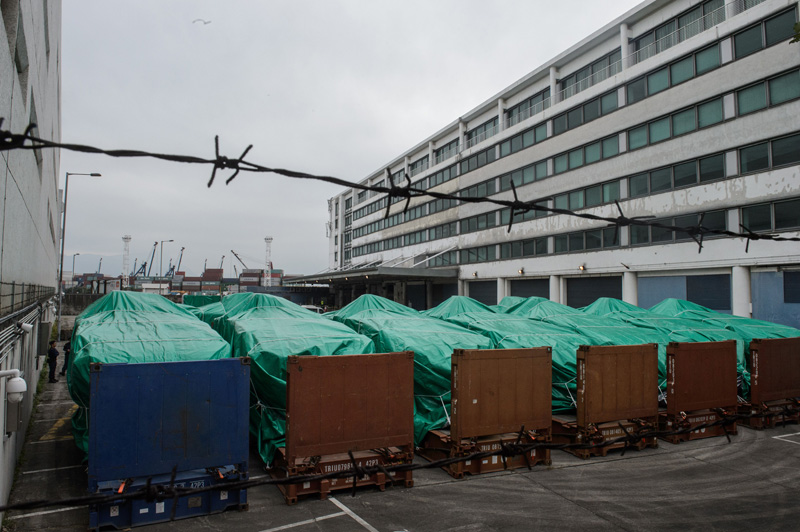
Armoured vehicles belonging to the Singapore military are seen covered with tarpaulin at a customs and excise facility in Hong Kong on November 25, 2016. (Anthony Wallace/AFP/Getty Images)
CONTRASTING CONCERNS
At the root of recent tensions between Singapore and China lie fundamental differences in their views of the international order. Like China, Singapore is a beneficiary of the U.S.-established post–World War II liberal international order, especially in terms of FDI, access to the U.S. market, and systemic as well as regional stability. Unlike China, Singapore harbors no pretentions about reshaping this order and prefers the continuation, if not expansion, of existing arrangements, perhaps with some slight adjustments. The country has little reason to desire the transformation of an international and regional order from which it profits and that it has no hope of altering, whatever the flaws. Singapore’s strong support for the Trans-Pacific Partnership (TPP) is consistent with this outlook.
Integral to the international and regional order that Singapore wishes to maintain are the current laws, rules, norms, and practices governing the maritime domain in Asia and beyond. Trade, most of which occurs by sea, is after all consistently several times the country’s GDP. Arrangements like UNCLOS provide a basis for maintaining the stability and predictability of maritime affairs, which explains Singapore’s active participation in its formulation and consequent support for the regime. That Singaporean Tommy Koh was the second chairperson of the third UN Conference on the Law of the Sea remains a point of pride in local legal and diplomatic circles. Singapore naturally felt it had to accept the UNCLOS arbitral process and ruling once the Philippines initiated proceedings, regardless of the PRC’s unwillingness to recognize the tribunal’s jurisdiction. Similar considerations inform Singaporean apprehensions about China’s declaration of an air defense identification zone over the East China Sea.
Key to the status quo that Singapore wishes to prolong is the United States’ forward military presence in Asia, which supports freedom of navigation and access. Since the end of World War II, the U.S. Navy has kept sea lanes open, meaning that trading states like Singapore spend less on protecting shipping and maritime access than they otherwise might. Washington’s long-standing policy seems to be to show high degrees of restraint in exercising its ability to veto maritime access for others, including when it comes to surveillance in the U.S. exclusive economic zone. Because the United States is not party to territorial disputes in Asia and does not trigger racial sensitivities for Singapore’s neighbors, its influence is less controversial for Singapore. Singaporean leaders welcome an active U.S. security presence in Asia and work closely with Washington and its regional allies on these issues, even hosting U.S. facilities and regular U.S. military visits.
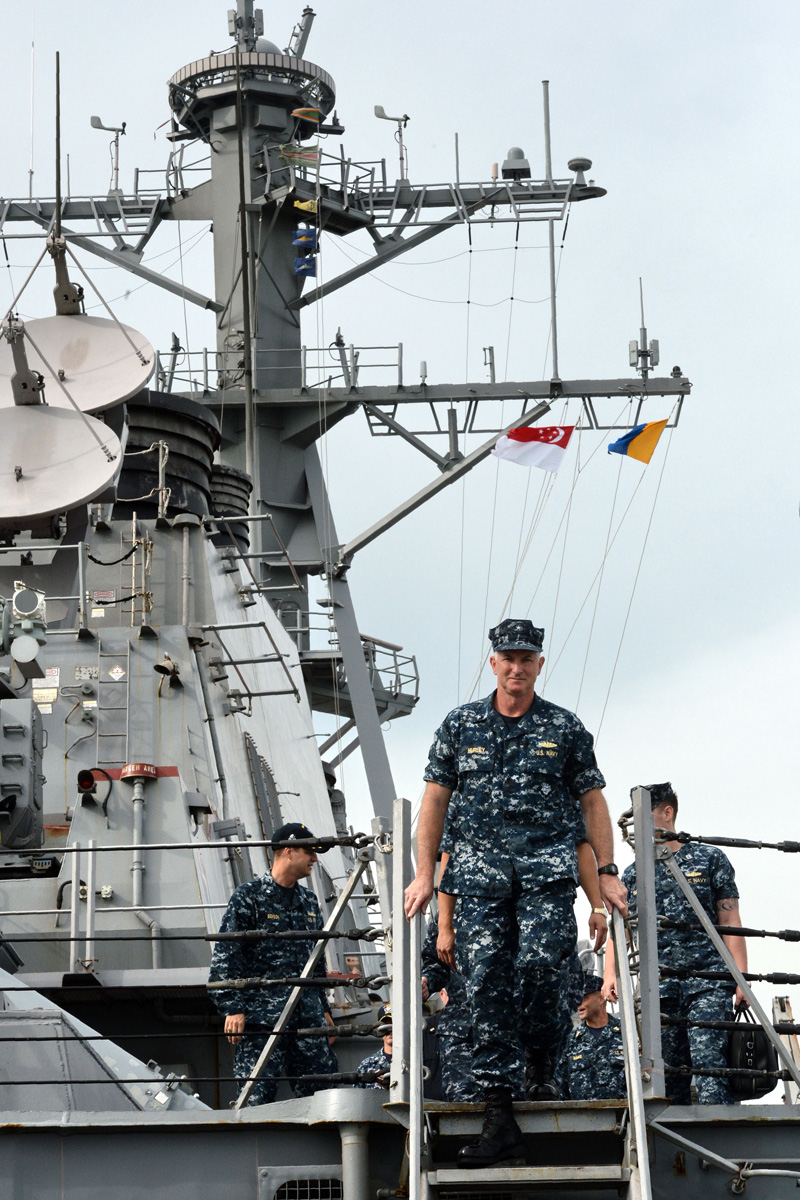
U.S. Navy Rear Admiral Brian Hurley on the USS Stethem (DDG-63) missile destroyer in Singapore on July 19, 2016, during the opening ceremony for the Cooperation Afloat Readiness and Training (CARAT) bilateral exercise. (Roslan Rahman/AFP/Getty Images)
Beijing views Singapore’s relationship with the United States warily. As much as China gains from the U.S.-established world and regional order, many in the country believe that Washington does not sufficiently account for the needs of a growing power and that this order requires at least a substantial overhaul. Existing mechanisms for managing maritime affairs, such as current applications of UNCLOS, could be part of that overhaul based on popular and expert commentary from China as well as official PRC statements on the South China Sea arbitral process and outcome. Those in Beijing who see an ever-present threat from the United States worry that the U.S.-Singapore security partnership, along with the U.S. hub-and-spoke alliance system in Asia, enables potential U.S. containment of China.
Such Chinese concerns appear especially salient given Singapore’s position at the southern entrance to the Malacca Strait, which is a critical sea lane for Chinese energy imports and trade with destinations to the west. Singapore’s close relationship with the United States, despite having an ethnic Chinese-majority population, and its military training in Taiwan seem particularly insensitive, if not inimical, to PRC interests. Beijing may wish either to shape Singaporean behavior or to circumvent it entirely, perhaps by partnering with Malaysia or Thailand. Chinese actions to address such concerns may result in greater friction in relations with Singapore.
PERILS OF FENCE-SITTING
The viability of Singapore’s strategy of “not choosing sides” relies on significant overlap in interests among Singapore, Beijing, and Washington, which creates the space for positions that all three sides can accept. Yet even though Singapore and China maintain significant economic ties—Singapore is among China’s top foreign investors and China is Singapore’s largest trading partner—areas where the two countries’ views on order and security overlap seem to be under more strain. President Donald Trump’s foreign policy could further complicate the picture if it withdraws U.S. commitments to Asia and the world. The United States’ retreat from the TPP after President Trump’s inauguration may come to symbolize Washington’s disengagement from institutionalized, multilateral cooperation in Asia. Diminished U.S. interest in the region spells fewer areas of Sino-U.S. commonality that Singapore can work with as it tries to maneuver between Beijing and Washington.
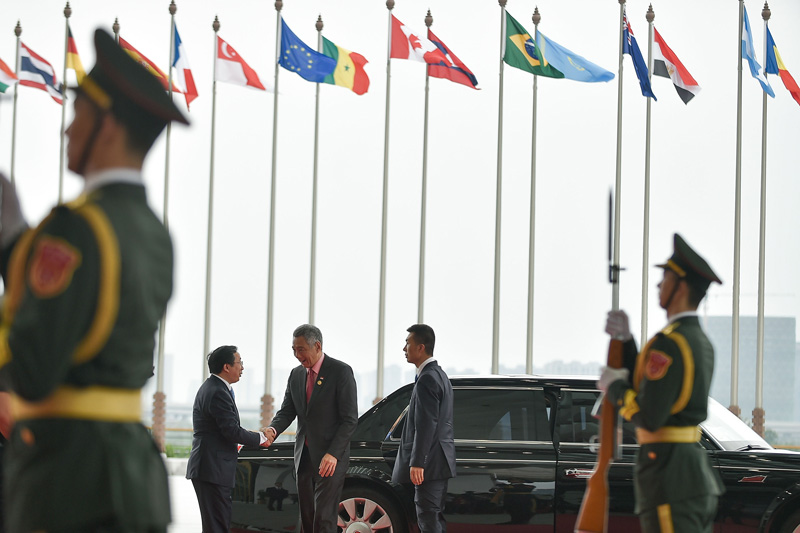
Singapore’s Prime Minister Lee Hsien Loong arrives at the Hangzhou International Expo Center to attend a G20 Summit on September 4, 2016. (Etienne Oliveau/AFP/Getty Images)
At a time when China is reclaiming and militarizing features in the South China Sea, a United States that is willing to take a quiet but resolute and consistent lead on ensuring maritime access is key for Singapore. The ability to regulate, restrict, or even veto maritime access to the South China Sea based on territorial claims and material capability could enable China to pressure trade-dependent Singapore. Regular demonstrations of demands for the freedom of navigation by Washington can remind China about the need for restraint, while allowing Singapore to avoid direct tensions with Beijing. Singapore’s silence over the U.S. freedom of navigation operations in disputed South China Sea waters suggests just such an appreciation of the situation. Yet Singapore may have new doubts about whether the United States possesses the prudence, moderation, and engagement necessary for this approach given Secretary of State Rex Tillerson’s strident confirmation remarks on the South China Sea and Washington’s messy recent handling of Korean issues.
Unfolding circumstances mean that Singapore could go from felicitous fence-sitting to being stranded in no man’s land between Beijing and Washington as U.S.-China tensions grow. In such a scenario, Singapore could be pressed to reluctantly side with either Washington or Beijing on such issues as access in the South China Sea, military deployments, rear-area support for military operations, and diplomatic backing. Singapore’s choices could spur strong reactions from the power that feels it is losing out. Non-decisions too may be hazardous, given that they can leave both Beijing and Washington dissatisfied and invite concurrent pressure, even retaliation. Seeking simultaneous accommodation of both the United States and China may therefore produce diminishing returns and growing risks for Singapore as conditions increasingly constrain the island’s ability to tack between the two major actors.
Ja Ian Chong is an Associate Professor in the Department of Political Science at the National University of Singapore.
Download a pdf version of this analysis piece here.
Banner Image: © How Hwee Young Pool/AFP/Getty Images. Singapore’s Foreign Minister Vivian Balakrishnan speaks to his Chinese counterpart Wang Yi during a meeting at the Ministry of Foreign Affairs in Beijing on February 29, 2016.


